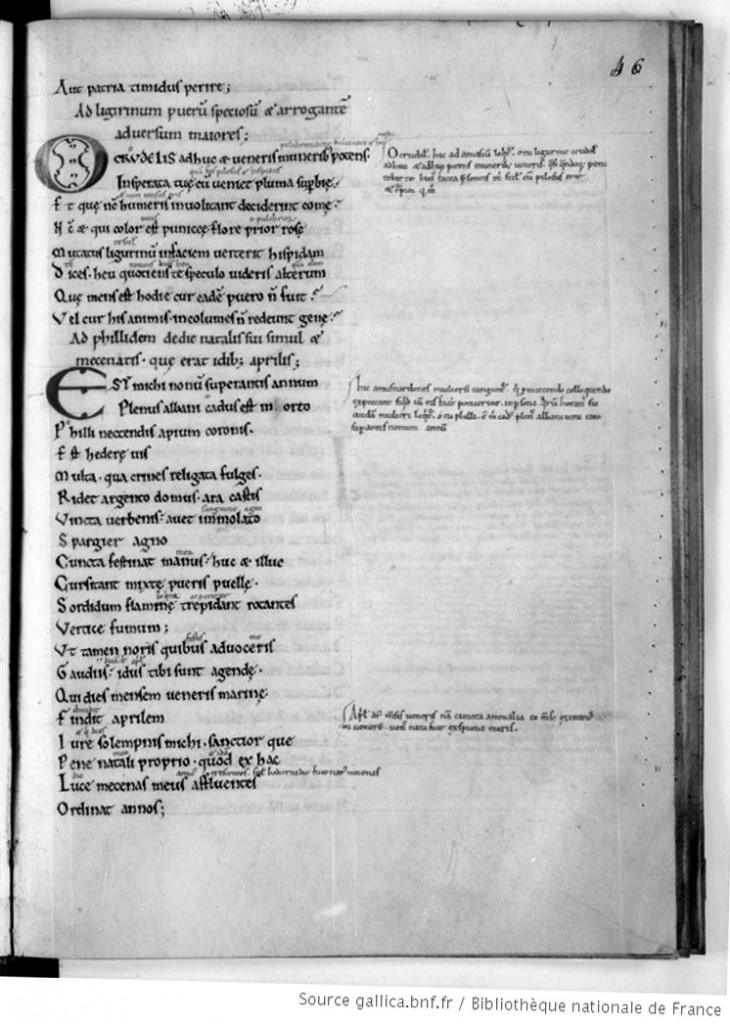Justin Hastings
(Loyola University Chicago)
“Allegoresis, Source-Text, and Paratextual Distortions:
Horace’s Ode 3.9
in Paris, Bibliothèque nationale de France, MS Latin 17897“
Abstract of Paper
To be presented at the 53rd International Congress on Medieval Studies
(Kalamazoo, 2018)
Session on
“Manuscript (Trans)formations: Transmission and Reception”
Sponsored by the Research Group on Manuscript Evidence
Organized by Derek Shank and Justin Hastings
2018 Congress Program
[Published on 2 February 2018]
*****
In discussing Walter Benjamin’s term ‘the Nachleben of texts’, the textual scholar Sakunta
Chaudhuri asserts that reception and transmission of literary works are “always already” an
interplay of adaptation and alteration: “texts ceaselessly alter and extend their form; eventually
they pass into, or turn into, other works where the ‘original’ work persists as a ‘presence,’ the old
moon in the new moon’s arms’” (1). The logical extension of this premise is that “all texts are
made up of other texts” (2). This idea gets at the very heart of source study as a legitimate field
of intellectual activity.
The commentaries that accrued around the classical Roman poets in the
Middle Ages were written to help medieval readers understand these works in a way that was
harmonious with Catholic dogma; the path through this hermeneutic morass was allegoresis and
its strategies of reductio ad concordiam. My research centers around the ways in which
vernacular literature in medieval Britain made use of the commentary tradition that accrued
around the poetic corpus of Horace.
This paper seeks to explore what happens, with respect to tracing the transmission and
reception of the Horatian tradition, when allegoresis is so thorough in its methodologies that it
leaves behind reductio ad concordiam to become, in essence, reductio ad absurdum. To extend
Chaudhuri’s astrological conceit, what happens when the commentary so thoroughly “explains
away” linguistic difference that it becomes impossible to see beyond the event horizon of
allegoresis? This paper takes as its focus the commentary on Horace’s Ode 3.9 in
Paris BnF MS Lat. 17897 as a locus for exploring these forces at work upon the Horatian poetic corpus.
*****
Citations:
(1) Sakunta Chaurhudi, “Introduction”, The Metaphysics of Text (Cambridge: Cambridge University Press, 2011), page 8.
(2) Ibid.
*****

Paris, BnF, MS latin 17987, folio 46 recto. Horaces ‘Odes’ (Carmina), Book IV.10-11 with commentary. Via gallica.bnf through Creative Commons.
‡
*****
Website Editor’s Note:
Another Abstract for a Paper presented by Dr. Hastings is posted here:
We thank him for his expert contributions to our sponsored and co-sponsored Sessions, as well as our other Events.
*****
